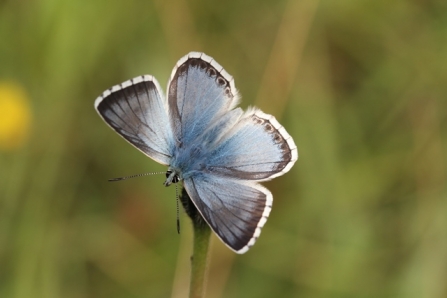During a recent survey at Wildmoor Heath nature reserve, I learned about a bizarre relationship that exists between ants and butterflies. Specifically, certain ant species help raise butterfly young by taking the larvae (caterpillars) into their nests for safe keeping.
This got me thinking… why do the ants help the butterflies? Why would one species help another, and are there more examples of this?



